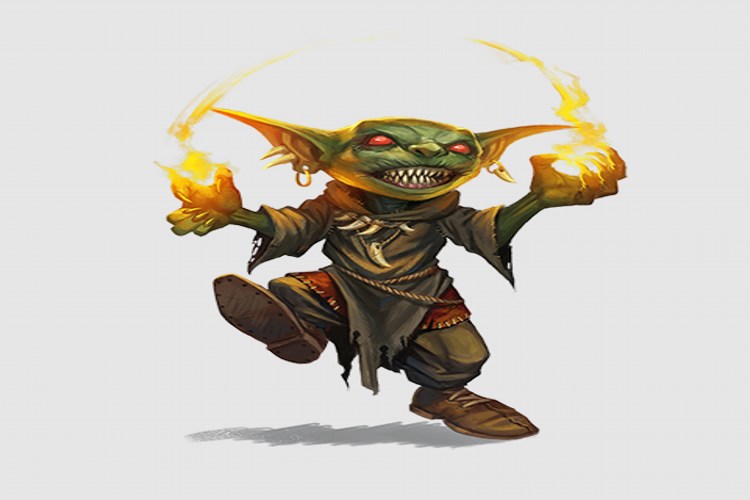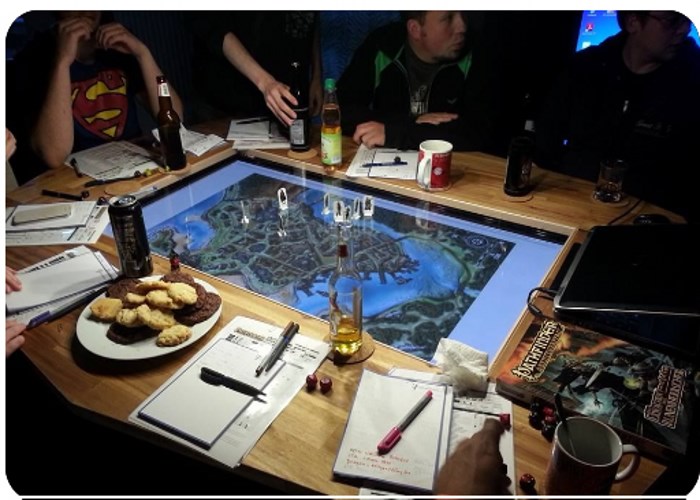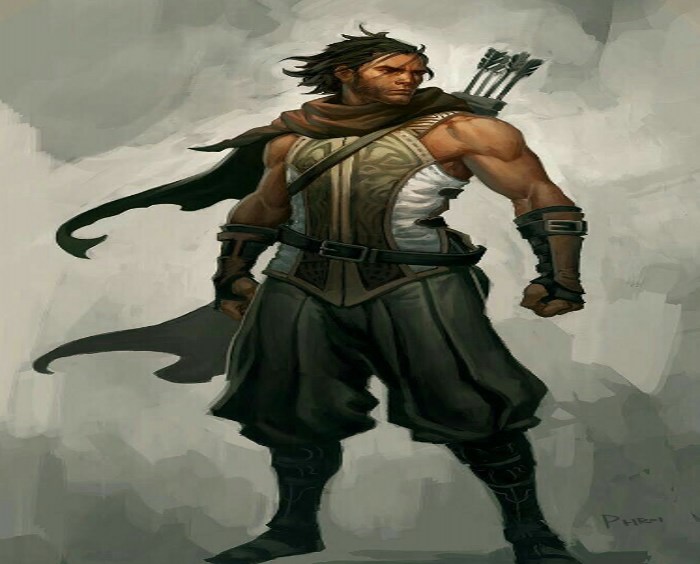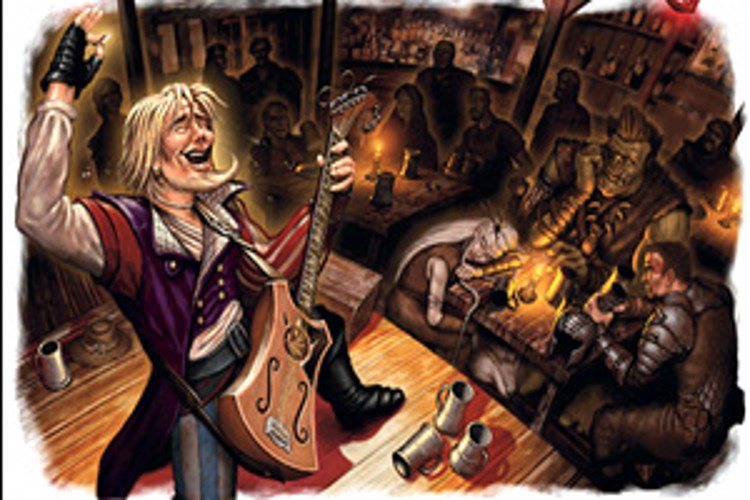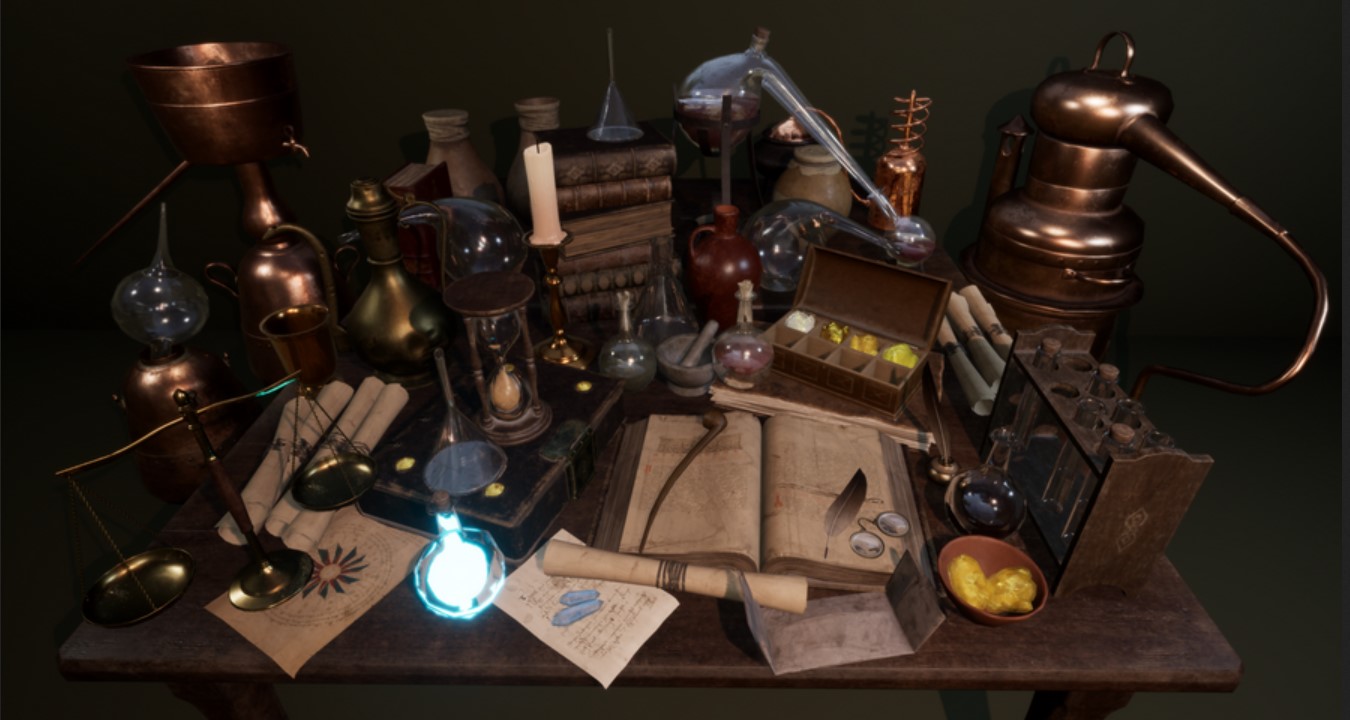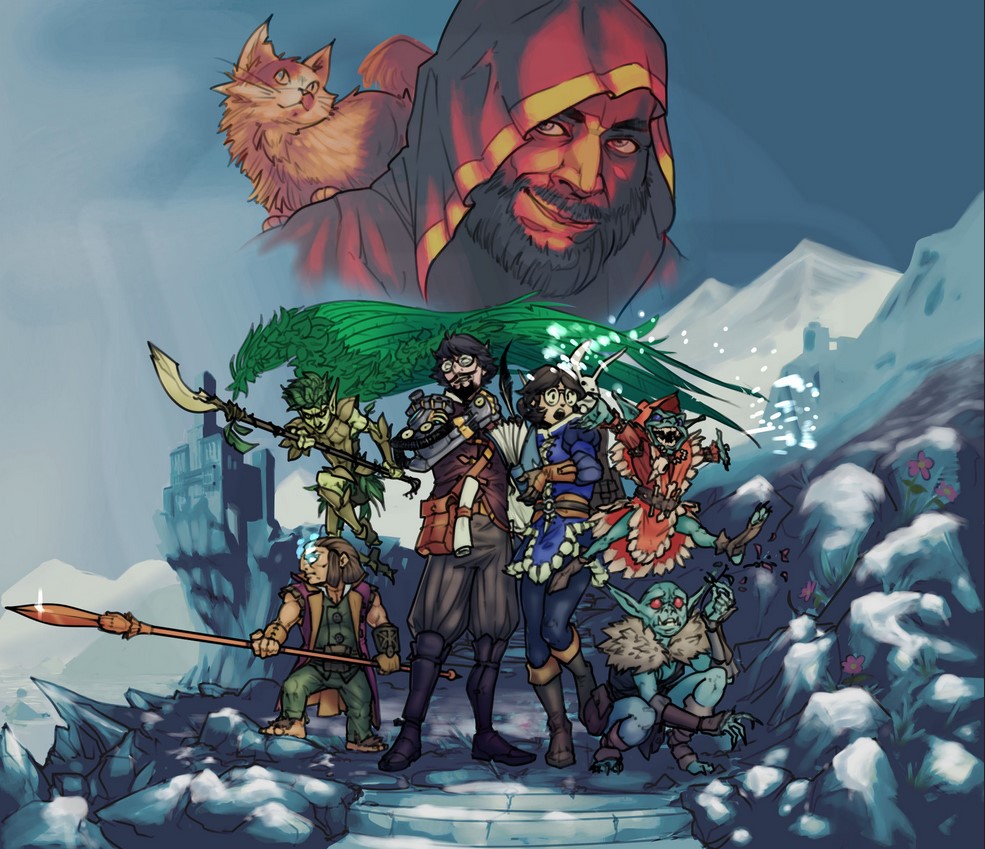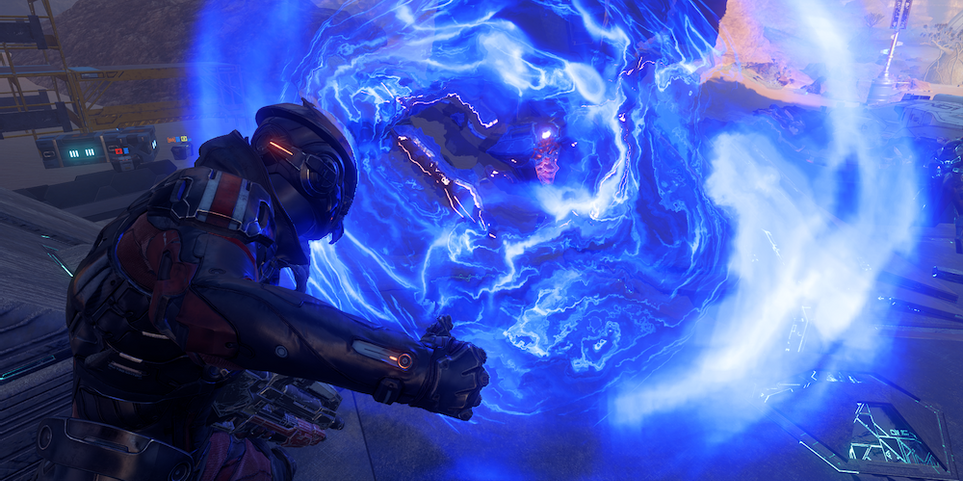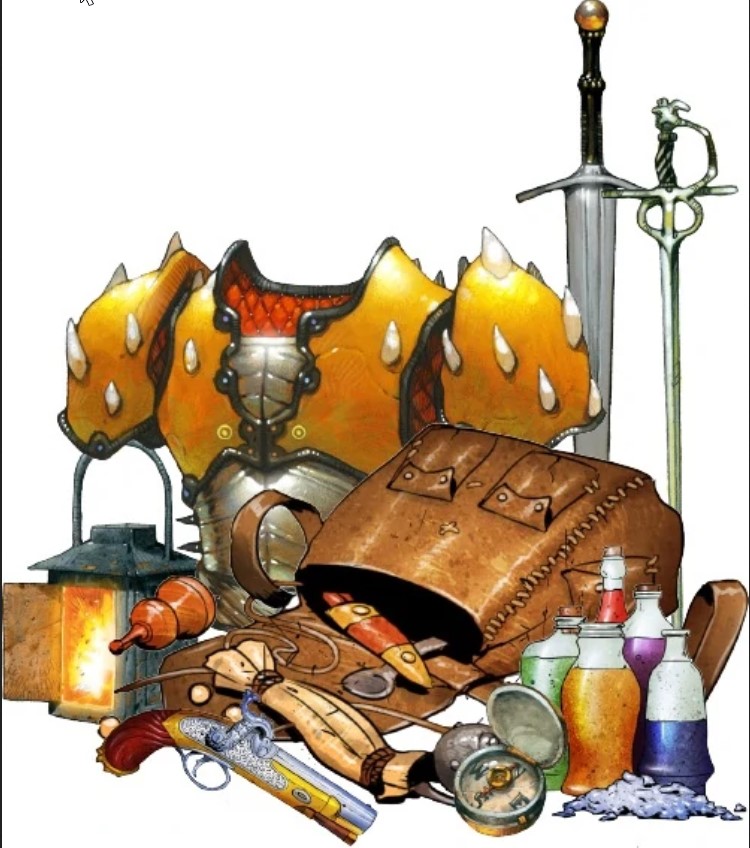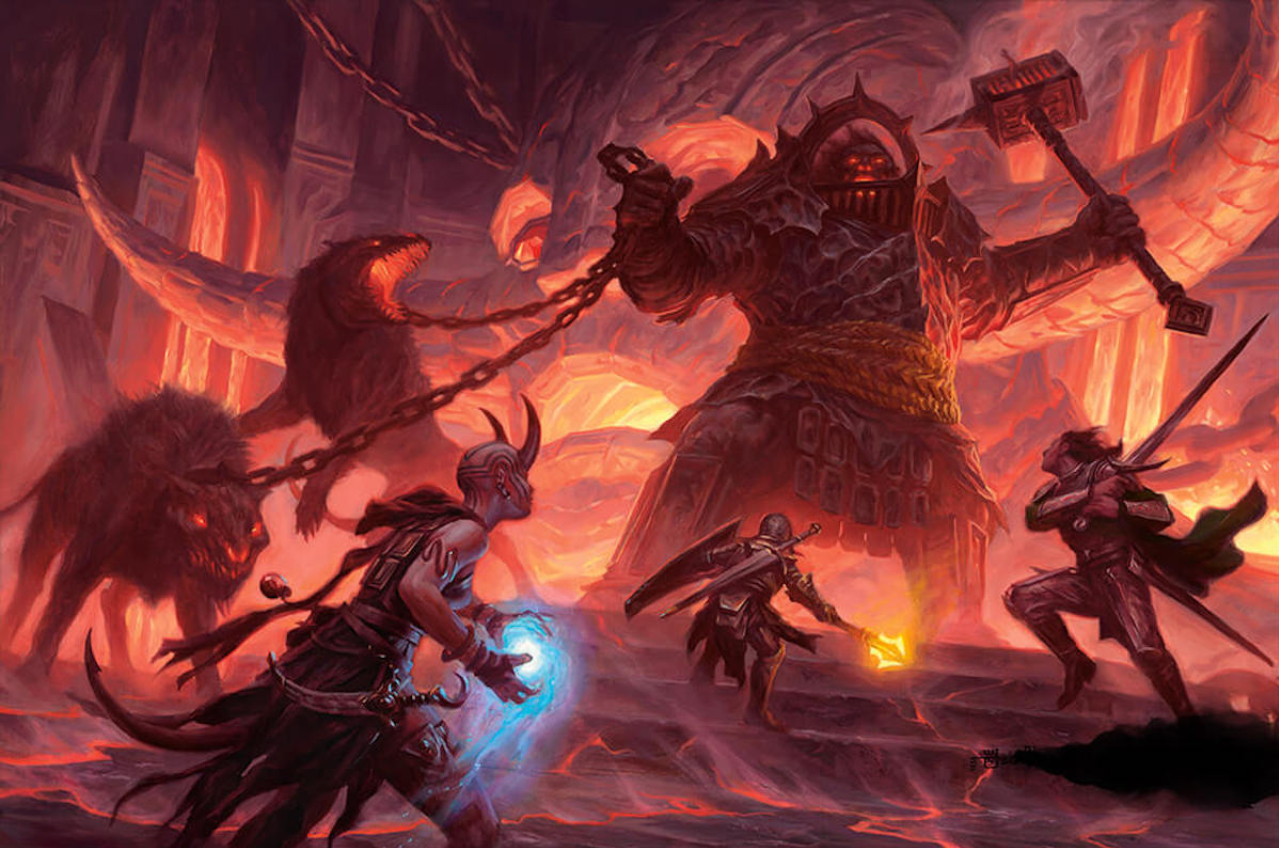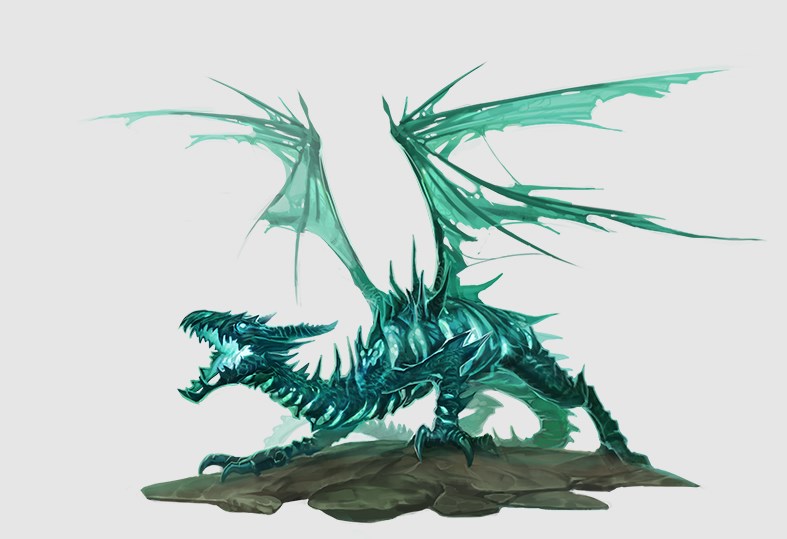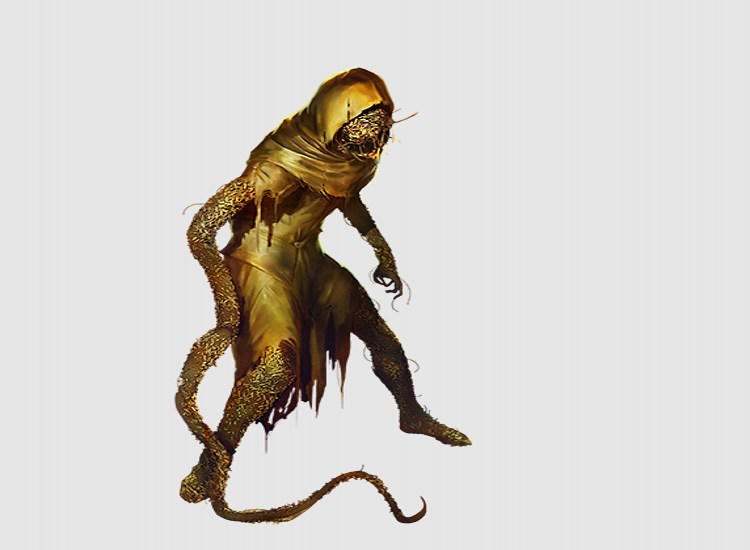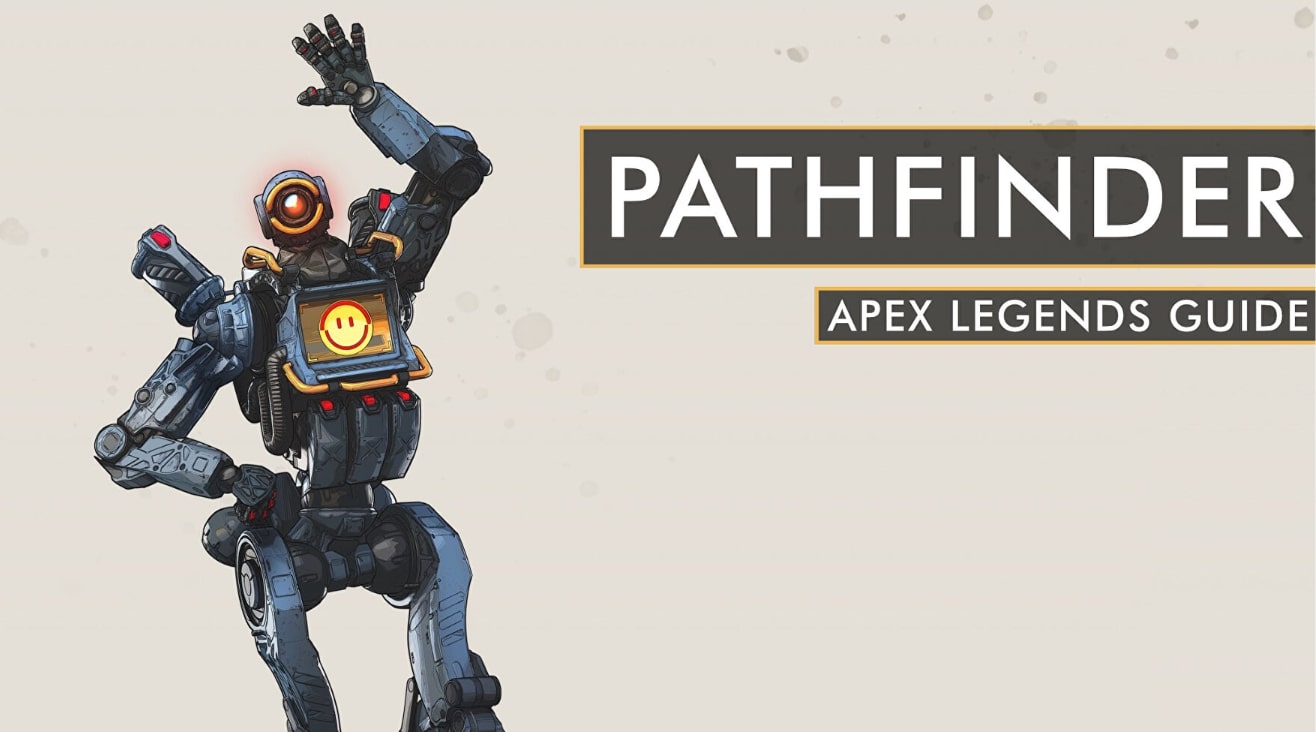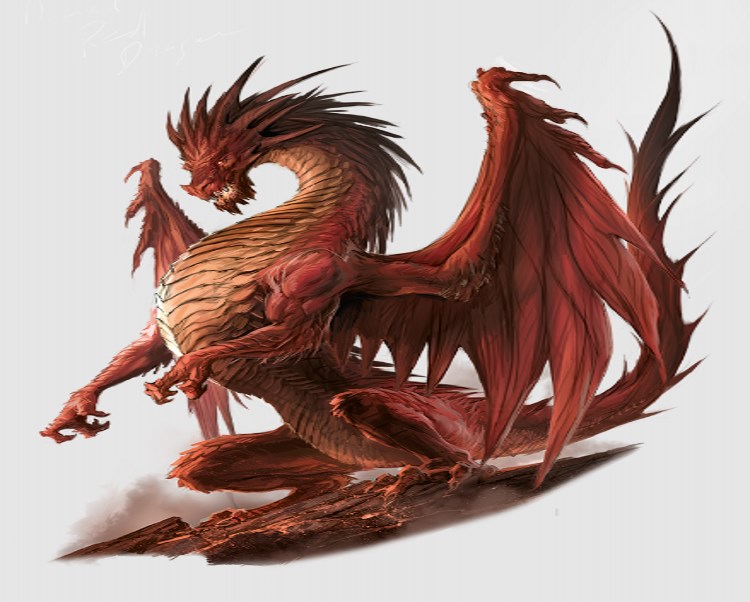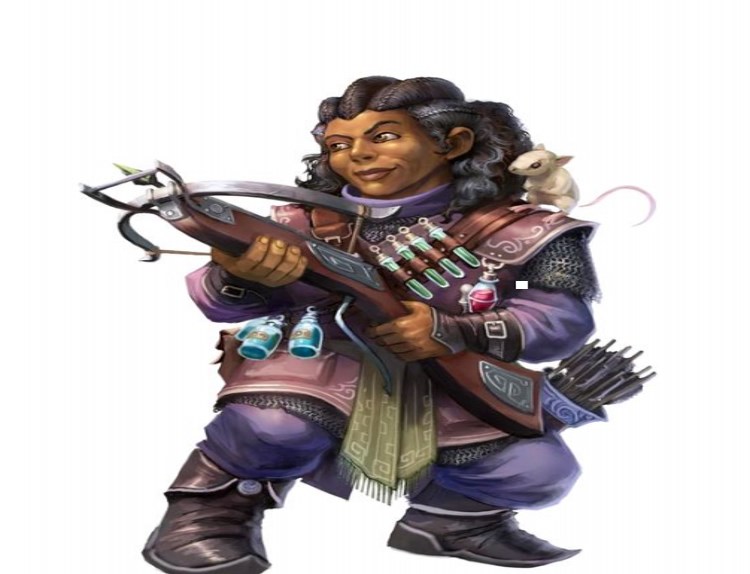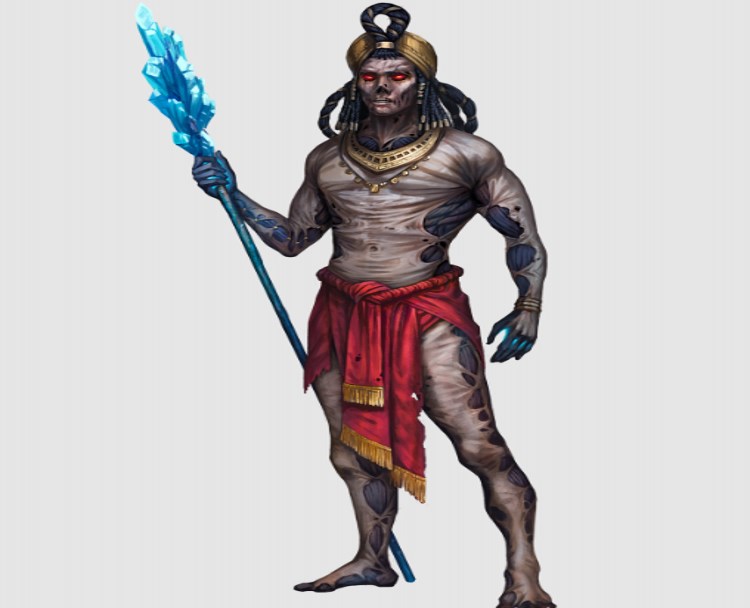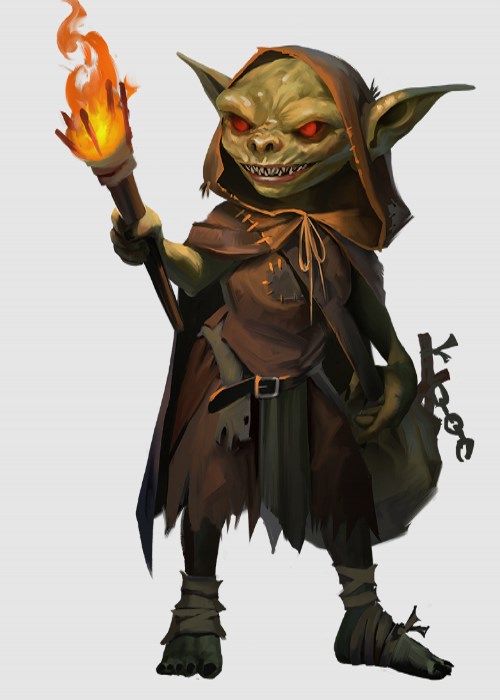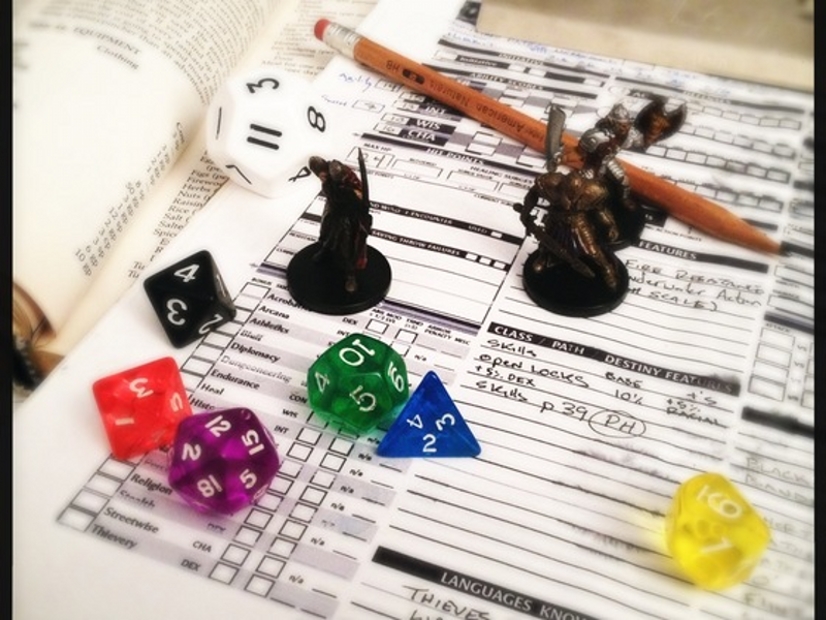![[Top 5] Pathfinder Most Fun Classes (Ranked) Fun Pathfinder Classes](/sites/default/files/styles/responsive_image_600xauto/public/2023-02/most-fun-classes-banner.jpg.webp?itok=PG_MOz1d)
Most are concerned with which classes are the most powerful (pure casters and summoner if you’re interested). While there’s nothing wrong with that question, the topic I want to tackle today is which classes are the most fun. This is an incredibly hard list to put together and there are more than a few that came close but didn’t quite make it.
5. Fighter
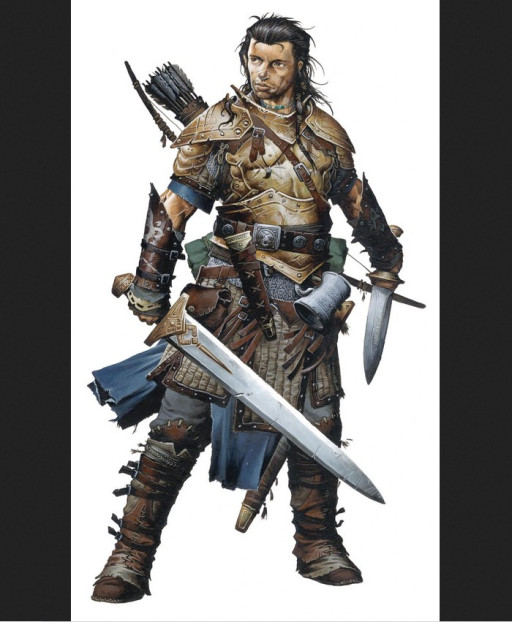
A fighter with a shortsword and dagger.
Fighter often gets a lot of flak for not keeping pace at higher levels or because all it does is hit things real hard. In reality it does output a very consistent level of damage and can do that all day as it doesn’t rely on spell slots or a limited pool of points to buff its damage. While its maximum potential damage won’t reach as high as some other classes, its average damage per hit is a fair bit higher than other classes which rely on more complex class features.
But I’m not here to compare power, I'm here to show you why fighters are fun. As somebody whose first ever character started off as a fighter, there were a bunch of advantages at lower levels. In the first few encounters, my character did a good job at taking on more goblins than these others thanks to his higher AC and hitpoints. This allowed the cleric and druid to use their limited spells from a safer position. He also made for a great flanking buddy with the druid’s lynx.
Fighter really does show how teamwork makes the dream work. Once we added a bard and a rogue to our party, he was hitting more frequently and harder thanks to bardic performance and made for an excellent flanking buddy for the rogue to pull off her sneak attack damage. If you’re a real team player, fighter is such a fun option as you really help everybody shine.
At full BAB you’re also getting you’re iterative attacks sooner, meaning you’re getting more out of any buffs placed on you. +2 to attack and damage sounds small but that’s an extra +4 total if both your attacks land (obviously these numbers get much higher.
Once your wizard or bard has haste, that's yet another attack, taking other buffs like good hope and heroism even further and really squeezing the extra value out of them.
Full BAB also means your combat manoeuvres are better than a lot of other classes and with a feat at every level you can go deeper into feat trees earlier than other classes and even get further into them than others can at all. Go into grappling, tripping, sundering, or whatever takes your fancy.
Fighter Fun Factors:
- A lot of people simply envision a human fighter, maybe with a sword and shield but in reality fighter is a much more versatile class than it’s given credit for. Unlike some other classes you aren’t locked into a particular fighting style. Take rogue for instance where you’re only really going to use light weapons. Sword and board, two-handed weapon, switch hitter. Dig into feats and you’re sure to find a concept you never would have considered
- Combat stamina is ordinarily a feat but GMs do have the option of letting fighters have it for free which is really awesome for giving the fighter more value. It grants a stamina pool equal to the fighter’s BAB and constitution modifier which you can use to increase your constitution (doesn’t grant extra points) or spend points to use a list of feats as though you had them, and you can even recover points by resting for short periods of time, a benefit not normally seen in Pathfinder
- Fighter is especially fun if you’re a more experienced player and know more about feats than newbies will. With a feat at every level, you can go deep into feat chains and pull off some awesome stuff in combat which feel especially epic when you have a GM great at providing combat descriptions
- A LOT of archetypes. Fighter has more archetypes than there are classes in the game. It’s a lot of reading but very much worth doing as many of them can be a huge help in figuring out what you want to specialise in and make doing that easier
- Specialisation is key thanks to advanced weapon and armour training which can be used to get a whole host of awesome benefits for using your favourite gear. Find your niche and carve it out
Fun Score: 70/100
4. Skald

An elf skald wielding a drum and a polearm
I played skald for a while and wow is this class awesome. The best way I could describe Kjell, Master of Lute (get it?) was that he was a barbarian with an appreciation for Shakespeare. He was both a brute and a gentle poet. Skalds are war poets, both capable of dishing out damage, and buffing their party with their awesome music.
I’m a huge fan of hybrid classes in general but skald is up there as one of my favourites. You get a barbarian’s rage in the form of a performance as well as bardic knowledge. Even better is they use charisma as their casting stat and to determine how many rounds of their performance they get so they make for a great party face. All charisma classes get this benefit but as a ye olde rockstar, the skald has some of the coolest flavour.
Skalds also get some unique performances such as the song of marching. Spend one round of performance for an hour of hustling for free. Speed up travel times and from 11th level when you can get the improved skald’s vigour feat, you can heal the whole party while you travel by giving them fast heal equivalent to the strength bonus granted by your song!
If your party drops dead you can force them to keep fighting via song of the dead which raises dead allies while you perform! Talk about inspiration!
Perhaps the coolest thing skald can do is spell kenning. As a full round action you can cast any spell from the wizard spell list of a level you can cast. Grab a fireball to start the encounter with a bang!
Skald Fun Factors:
- It uses the bard list with plenty of music themed spells to make you feel awesome. Taking blistering invective to literally burn your enemies with harsh words, or bladed dash to have an anime moment where you can move 30ft and hit somebody along that line with your greatsword
- Grab the feat skald’s vigour to get fastheal and make up for the pitiful d8 hit dice and only medium armour. By investing 10 ranks in perform (song) you can get this on the whole party and keep the party going as long as you want!
- Unlike barbarian rage, the skald’s song ending doesn’t induce fatigue so party members can dip in and out as they like for the bonuses when they need them. Casters can dip in for fast heal them dip out when they need to cast!
- Other classes with rage like barbarian and bloodrager can use their own rage by listening to the skald but without using up their own rounds! While they can’t use their rage powers when doing this, this is a good way to let them rage during smaller encounters when they wouldn’t want to be fatigued afterwards. Make a whole party of angry dudes!
- At later levels you even get free DR just by being a skald!
- Once you can start performing as a swift action the world is your oyster. Grab purging finale to remove a condition on an ally then immediately start performing again
- Reckless rage lets you double your power attack while raging! Extra penalty for an even higher bonus!
- At lower levels you actually don’t need the extra performance feat as performing needs a standard action to begin. In smaller encounters you don’t really need the performance. Just go hit your enemy and save your rage for the bigger encounters. Spend that feat on something much more fun!
- Thanks to versatile performance you can get much better value out of your measly four skill ranks than other classes can. Pick one or two performances (you’ll want sing for skald’s vigour) and then expand them as you level up to replace all your normal social skills like diplomacy, bluff, intimidate, and even handle animal with a single maxed out skill
Fun Score: 75/100
3. Summoner
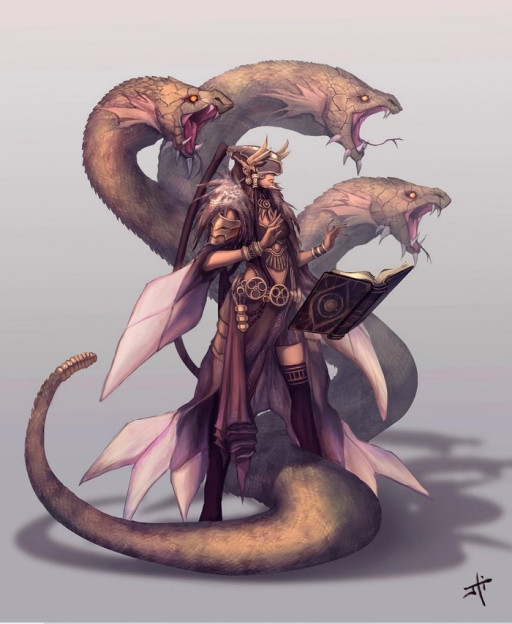
A summoner with a three headed serpentine eidolon
Summoner is widely regarded as one of the most broken classes in Pathfinder first edition and it’s a tough claim to argue with given how quickly you can get six attacks on your eidolon. While unchained summoner seems to largely fix the issue it also massively restricts the customizability of the eidolon.
Summoner is also one of Pathfinder’s most interesting classes and its premise alone is awesome. Somehow they have called upon a being from another plane, one which has taken a shape based on their master’s will. Perhaps they called on it in a moment of desperation or maybe it was their imaginary friend as a child. Your character could even believe it to be the soul of a long lost loved one who has returned in their time of need. Given the flexibility of the eidolon it’s very easy to give it a shape that ties nicely in your character’s backstory.
The summoner themself also gets a very neat spell list. While they aren’t a pure caster (thankfully), summoner does get some spells at a lower level than most other classes like teleportation circle which for every other class that gets it is a 9th level spell but summoner gets it as a 6th level spell at 16th level. They also get some spells like haste as a 2nd level spell, allowing them to get it surprisingly early at 4th level. Overall they get a nice mix of buffs, battlefield control, and utility options.
The eidolon can take a variety of forms. Biped, quadruped, avian, aquatic, tauric, or serpentine. Each form has its benefits and drawbacks such as fly speeds, swim speed, pounce, or reach. This wide range of shapes really adds flexibility to the eidolon, though do note that you can spend evolution points to get the features on other shapes. For example, any shape can take the fly evolution.
From 10th level you can even take points from your eidolon and spend them on evolutions for yourself. Been disarmed and you need a way to attack in a pinch? Grab some claws. Get creative as and when you need it.
The drawback of the eidolon is a bit circumstantial. Perhaps your eidolon is scary and the townsfolk don’t like it. You dismiss it only to get attacked. Or perhaps you’ve been attacked in the night.
Summoning your eidolon takes one minute but there is no limit on the number of times you can summon it a day. If you find yourself without it, you can cast summon monster as a spell-like ability and summon awesome stuff anyway. Also useful when your eidolon gets targeted by spells like banishment which can really ruin your day as your whole thing is summoning.
Summoner Fun Factors:
- You can rebuild your eidolon every time you level up. Spend all your evolution points, otherwise they’re lost. Grab something redundant if you have to because next level you can redistribute them however you need
- While summoner is notoriously broken you can make this work without giving your GM a headache. You have so much more leeway to take suboptimal evolutions and spells than some other classes. With the ability to completely rebuild your eidolon at each level it’s super easy to adjust your summoner to meet the rest of the party’s power level.
- Especially great if you’re playing in a party of newbies who don’t know what they’re doing. Take a load of fluff evolutions and steadily build up in power as the other players get to grips with the system without making them feel dumb for not knowing how to play
- Some really fun archetypes too like synthesist. Merge your summoner and eidolon into one, allowing you to focus on a single character rather than trying to juggle controlling two. There’s also some really cool concepts to be had here. A while ago I briefly played a synthesist whose flavour was drawn from a load of anime. His eidolon was a skeletal armour with long golden hair which I used as a tail attack. When I cast enlarge person it morphed into a golden fox, and my plan if I had the chance to use enlarge person and evolution surge in one go was for it to become a giant robot mech
- Have I mentioned how fantastic the spell list is? Haste as a 2nd level spell, battlefield control like the various pit spells and black tentacles, and spells specifically for your eidolon such as evolution surge and rejuvenate eidolon
- Get real sneaky on your opponents with the transposition class feature. Lure the enemy to the squishy summoner then swap places with your big scary monster. Get real tricky to keep the enemy on their toes
- Also awesome as an NPC thanks to the flexibility. After the first encounter their eidolon may start taking shapes with the intention to directly counter the party. With summon monster or by using the master summoner archetype they can become a whole encounter by themselves
- There’s also a lot of fun to be had by taking some of the lesser recommended evolutions like tremorsense, shared evolution to grant the summoner something they might need, extra heads for multiple personalities, or turning it into a mount
- Can even work as a multiclass if you take the wild caller archetype for extra evolution points. Make a very powerful eidolon for your summoner level but then take levels in another class to balance it out. I once considered mixing it with sorcerer to expand my spell list but anything that doesn’t rely on armour and doesn’t suffer too much from not being full levelled could work. Could do rogue to make your eidolon a flanking buddy
Fun Score: 80/100 (just be wary of making your eidolon too powerful and work closely with your GM to keep them balanced)
2. Rogue
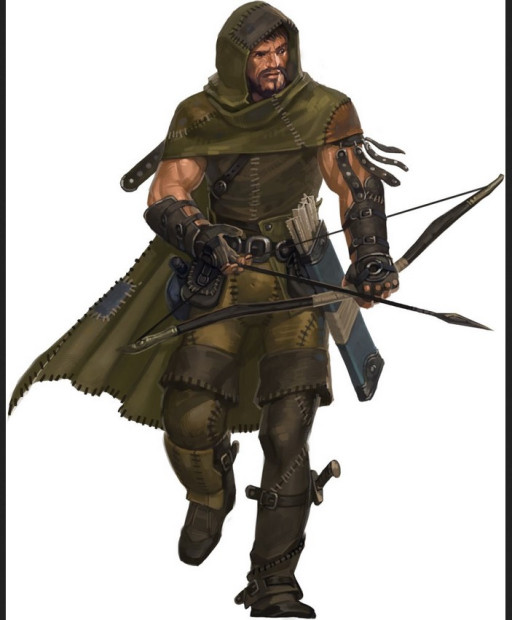
A bow wielding rogue
Rogue in combat pretty much always does the same thing. Unlike fighter it doesn’t quite have the same scope in terms of the role it can fill in the party. However, the thing it does have over fighter is that it only actually needs one stat: dexterity. This has since become easier with unchained rogue which any GM should be telling you to take over the original version.
But this reliance on only a single stat means the rogue can serve a variety of social roles even if their combat role is always going to be pretty much the same. While you will want constitution for health (never dump it for the love of Nethys) your mental stats are free game.
You could go for high intelligence for even more skill ranks and be a weirdly knowledgeable street rat. High wisdom and dump int to be a seemingly stupid yet strangely insightful guy. High charisma to sweet talk people. So long as you’ve got all the dex you need it’ll be all good, making rogue a social class just as much as it is a martial one.
The big perk of unchained rogue in particular is that you get weapon finesse for free and at 3rd level get dex to damage with a chosen weapon. Now you’ve got those early level feats to spend on something fun.
One of the other big perks of rogue are rogue talents which can add all sorts of fun flavour and utility, making them useful in a larger variety of scenarios from getting firearm proficiency to black market connections making it easier to get your hands on magic items. Peruse this list for stuff that’ll catch your eye.
Just a note to new players, I wouldn’t worry about grabbing stuff for finding traps. I’ve found they don’t come up all that much so check with your GM that it’s actually going to be relevant enough to take. There are so many better options that’ll give you so much more enjoyment. Just make sure your perception is good, which is never a bad pick because it’s the most rolled stat in the game.
Rogue Fun Factors:
- First three levels are stacked with awesome features. 2d6 sneak attack, evasion, a talent, and finesse training make rogue an awesome three level dip to combine with other classes
- Great multiclass with monk. All those attacks with an extra 2d6 sneak attack is awesome and makes for a cool character arc where becoming a monk is part of their redemption. You can even grab the accomplished sneak attacker feat after a few more levels to get an extra d6
- Take levels in a spellcasting class to meet the prerequisites for the arcane trickster prestige class and deal sneak attack damage with spells!
- If you’re multiclassing you may want to consider the knife master class to bump your sneak attack to D8 and get more value from it. Two-weapon fight with at least one dagger and use that whenever you’re eligible for sneak attack
- Super open when deciding what stats you want to be good which allows for a wide range of personalities beyond antisocial edgelord
- Despite what some think the rogue makes for an awesome team player (as do many classes given that is the point of Pathfinder). Flank with another martial as often as possible to do sneak attack damage. Between two of you, taking down enemies becomes much easier with the +2 to attack rolls you both get and the sneak attack damage
- Sneak attack gets scarier with debilitating injury as you can cause -2 to AC or attack rolls, or halve an enemies’ movement speed for one round per time you deal sneak attack damage.
- The -2 to AC or attack rolls is actually a -4 for you! Even at a -2 for your teammates being able to do this is super valuable. Give the other martials an easier time hitting, make your allies harder to hit, or even slow down enemies while also preventing them from making five foot steps. That last part can stop enemies from getting too close to allies using reach weapons and need to be 10ft away
- If you want to get really funky and try playing a rogue using strength and a non-finesse weapon, there are a couple options. Play the original rogue, not unchained. One option is to play tengu and take the alternate racial trait to get proficiency with all swords. But you’ll need either an amulet of natural armour or to spend a feat on medium armour.
- Alternatively you could play a tiefling with the racial trait to get natural armour and then get the amulate on top of that and spend a feat on weapon proficiency. Doable but you won’t be able to make use of features like evasions so be warned that your sneak attack on a greatsword comes at a cost
Fun score: 85/100
1. Magus
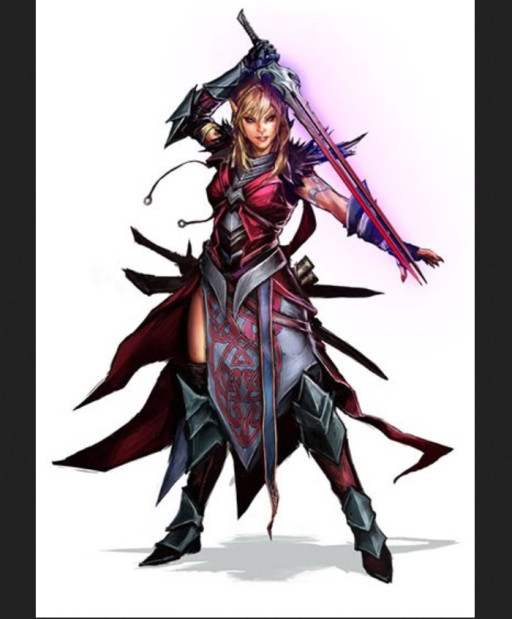
I’m a huge fan of the magus which is a hybrid class in all but name. A mix between wizard and fighter, the magus blends martial combat with spellcasting in a way that’s far and beyond any other class. The core part of magus is their spellstrike ability which allows you to deliver touch spells via a weapon. Thanks, Paizo! Very cool!
Then there’s spell combat which is what puts magus functionally above other martial casters. In a full round action you can cast a spell and still make all the attacks you would be entitled to in a full round attack.
What confuses a lot of people is that spellstrike and spell combat are two completely separate features, meaning you can use spell combat to cast any spell and then attack. Need something defensive? Cast shield then whack your enemy. If you cast a touch spell you get a free touch attack (turned into a weapon attack via spellstrike) then your regular attacks.
You also get a pool of arcane points equal to half your magus level plus your int modifier. By spending one point you can enhance or enchant your sword. No spending money on permanent enhancements. Pick what you want on the fly! The enchantments last one minute so even at low levels that’s great value.
Magi use wizard spellcasting, meaning you get a spellbook (and can learn new spells between levels!) and have to prepare your spells in the morning. You don’t get nearly as many spells as a wizard but at 4th level to compensate you get spell recall. By spending arcane points you can replenish a spell slot as though you hadn’t cast the spell. Insanely useful, especially on travel days where you’ll want multiple castings of spells like mount, spider crawl, or maybe even fly.
Later you can even use spell recall to cast spells you haven’t prepped yet! This pretty much makes you a diet sorcerer and offers you a pretty great level of flexibility. It can also make you pretty popular with the party if you have a spell you wouldn’t normally prep but suddenly need. Gives ample opportunity to use those spells that seem useful but are a little too niche to prepare every day.
You can even prepare spells you don’t know by spending a point per spell level in a morning. Pick the spell you want that day and prep it. Simple as that. You can even recall it that day too!
Then there’s the arcana. So many cool options amid the duds. These are kinda like rogue talents but are mostly optimised for combat rather than social situations. Your own selection can give your magus a more unique function and flavour.
Magus Fun Factors:
- Spellstrike just feels cool, especially when you play magus for the first time. Whack your enemies with shocking grasp, frostbite, chill touch. Plus even if you miss you keep the charge until you touch something or cast another spell
- The options for archetypes are amazing. Bladebound is a staple as you swap out your 3rd level arcana and reduce your pool to 1/3rd your magus level for a sentient sword that gains an enhancement bonus as you level up and its own pool of arcana to use for awesome powers.
- Chat to your GM about what you want and add the blackblade into your backstory. Is it an ancestral weapon? Something you stole? Or did it mysteriously appear one day? Is it friendly? Malicious? Ambivalent? Talking weapons are awesome
- Kensai is another very cool archetype. Best for dex builds so grab a rapier (or scimitar if you want to spend the feats for slashing damage) and add your int to your AC and your initiative rolls, spend your arcana on maxing your weapon damage. You can even pick an exotic weapon proficiency for free at first level!
- Did you watch Yu-Gi-Oh as a kid, see Kaiba hurl his cards at people and think, “That’s what I wanna do!” If so, card caster is for you. You get harrowed spellstrike, allowing you to attach both ranged and touch spells to ranged weapons and you get to treat playing cards as darts! By using harrow cards you get added benefits when the card matches your alignment!
- Beast blade is an archetype I’ve wanted to try for a while. You get an animal companion and can hold charges for your spells, allowing them to deliver the held charge. They can even hold spells and cast them by being empowered in a morning
- The flamboyant arcana is actually really cool even if it isn’t very highly recommended by most guides. You gain the swashbuckler abilities parry and riposte, and derring do but it’s the first that will interest most. Unfortunately you can regain arcane points by using it but it feels very cool to do and can add to your defence in a pinch. Given you can enhance your sword yourself you can compensate for the lower BAB. I recently had an awesome fight against a foe using parry and riposte. We ended up three parries deep in a single turn and it made for a very tense fight
- Close range is another awesome arcana. Makes ray spells eligible for spellstrike which lets you do ray of exhaustion and enfeeblement, disintegration, and ray of frost, among others. By doing a ray of frost you can get an extra attack in a full round for absolutely free!
- You can even get arcana to apply metamagic once a day like maximised and quicken spell! Both are terrifying. Maximise your shocking grasp or cast two spells in a single round
- Many guides will tell you to get a lot of shocking grasps which is fine but you can do cooler stuff. Get some variety in your first level spells like blade lash to trip enemies ten feet away and with a +10 bonus, or thunderstomp to do it even further away (use spellstrike gloves to do it with spellstrike). You’ll have a lot more fun this way
- Amazing spell list. Frostbite and chill touch have a charge per level so you can swing them around for a while with only one cast. Great defensive options in shield, mirror image, displacement, and greater invisibility to keep you in the fight for longer. Awesome mobility too in bladed dash as well as the greater version, and storm step which lets you move further and damage anything you pass through. You even get dimension door which if you combine with the feat dimensional agility you can warp around the battlefield,making full round attacks
Fun score: 90/100
You may also be interested in:
- Top 10 Games Like Pathfinder Kingmaker (Games Better Than Pathfinder Kingmaker)
- Pathfinder Kingmaker Best General - Who To Choose?
- [Top 10] Pathfinder Kingmaker Best Weapons That Are Powerful (And How To Get Them)
- Pathfinder Kingmaker Best Advisors - Who To Choose?
- [Top 5] Pathfinder Kingmaker Best Beginner Classes That Are Strong

